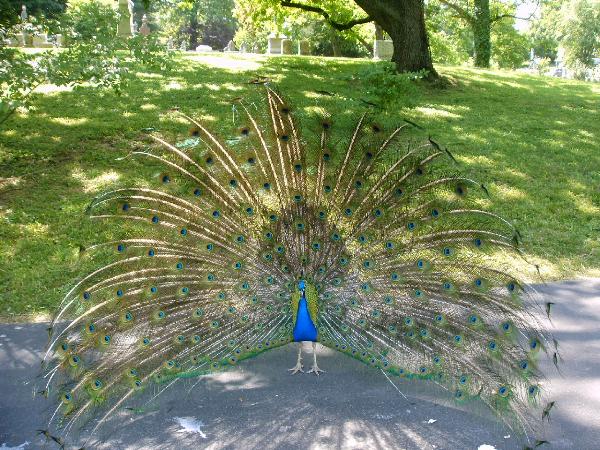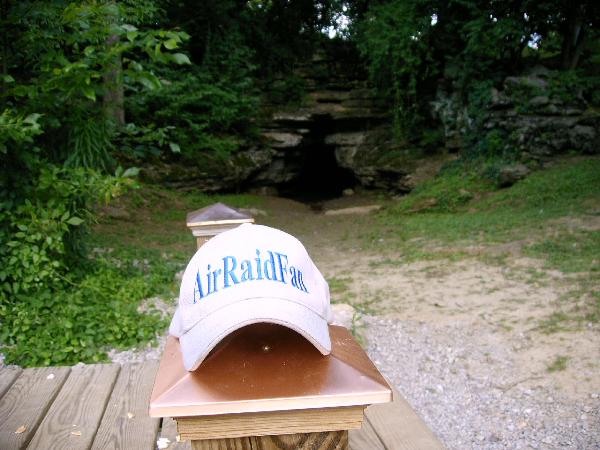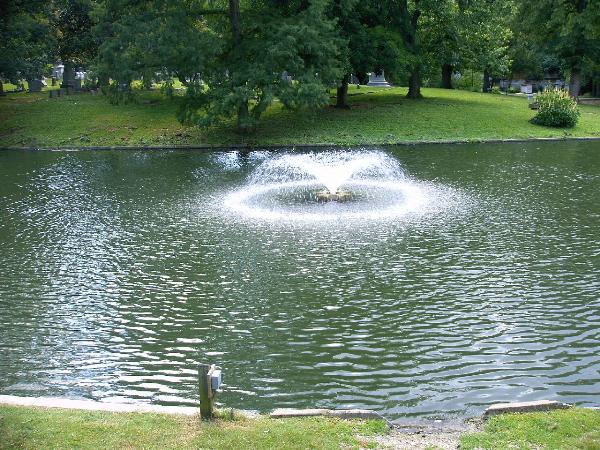 BY
BY

________________________________________
 Welcome to beautiful Cave Hill Cemetery. Hours of operation are 0800 - 1645 daily.
Welcome to beautiful Cave Hill Cemetery. Hours of operation are 0800 - 1645 daily.
What may well be Louisville’s best example of karst topography is the old section of Cave Hill Cemetery — complete with limestone outcroppings, a quarry lake, a spring-fed stair-step stream and several classic examples of sinkholes. The final stop for hundreds of notable Louisvillians also doubles as an arboretum for most every tree able to thrive in this climate.
History of Cave Hill Cemetery
The city fathers did not have a cemetery in mind when they acquired part of the old farm that the Johnson family had called Cave Hill. The farm had a good spring emanating from a cave, but its stone quarries were of principal interest, particularly because the proposed Louisville and Frankfort Railroad was supposed to run through the property.
As almost an afterthought, a few flat acres were to be surveyed off to balance the burying privileges at the west end of Jefferson Street.
They certainly did not envision Cave Hill Cemetery becoming one of the most beautiful arboretums and garden cemeteries in all of the nation.
__________________________________________________________________________________________
Cave Hill Cemetery is one of the
Seven Wonders of Louisville
_______________________________________________________
The Cave
Surveyed in 1874 by Edmund Lee, the spring and cave entrance were above the creek which later formed the lake. The spring water remains at the same constant temperature year round and the cave was formed by the corrosive action of water for thousands of years. The cave is deep and can be explored in an upright position for a distance (see posted sign), but then then at the end it must be explored by crawling on your stomach. The very end of the cave is too narrow to explore.
There are seven passages running left and right of the main opening which are 15-20 deep and also too narrow to explore.
There is also a colony of bats which live in the cave and are susceptible to White Nose Syndrome. WNS is carried by humans, so please do not approach the cave.
The cave is off limits to visitors!

You are standing in front of The Cave which gave Cave Hill Cemetery its' name.
Water flowing from the Cave Hill Spring could be referred to as a resurgence because much of the water comes from one or more sinkholes at a higher elevation. Karst springs generally are not subjected to as great a degree of ground filtering as spring water which may have continuously passed through soils or a porous aquifer. The quality of the water from this spring will generally determine the quality of spring water in the surrounding area. The quality of water discharged by springs can vary greatly because of factors such as the quality of the water that recharges the aquifer and the type of rocks with which the ground water is in contact. The rate of flow and the length of the flowpath through the aquifer affects the amount of time the water is in contact with the rock, and thus, the amount of minerals that the water can dissolve.
THE WATER FROM THIS SPRING IS NOT SAFE TO DRINK!
Caves are important ecosystems which harbor a variety of rare and endangered species. Cave systems also contain significant archeological artifacts, fragile mineral formations, and easily contaminated water supplies.
_______________________________________________________
The karst topography of Cave Hill is indicative of the landscape of early Louisville. When development began, the land was leveled and the geological features seen at Cave Hill were lost.
_______________________________________________________



To log this cache as a find, please do the following:
And to demonstrate the educational value of your visit please answer the following three questions:
1. What is the year round temperature of the water from the cave?
2. What length of the cave must be explored by crawling?
3. How many copper post caps are on the bridge structure in front of the cave?
Please email your answers to ARF! here:
AirRaidFan@aol.com
Please email your answers first, then LOG YOUR VISIT. Do not wait on a reply from me. FINDs which do not meet logging requirements will be quietly removed.